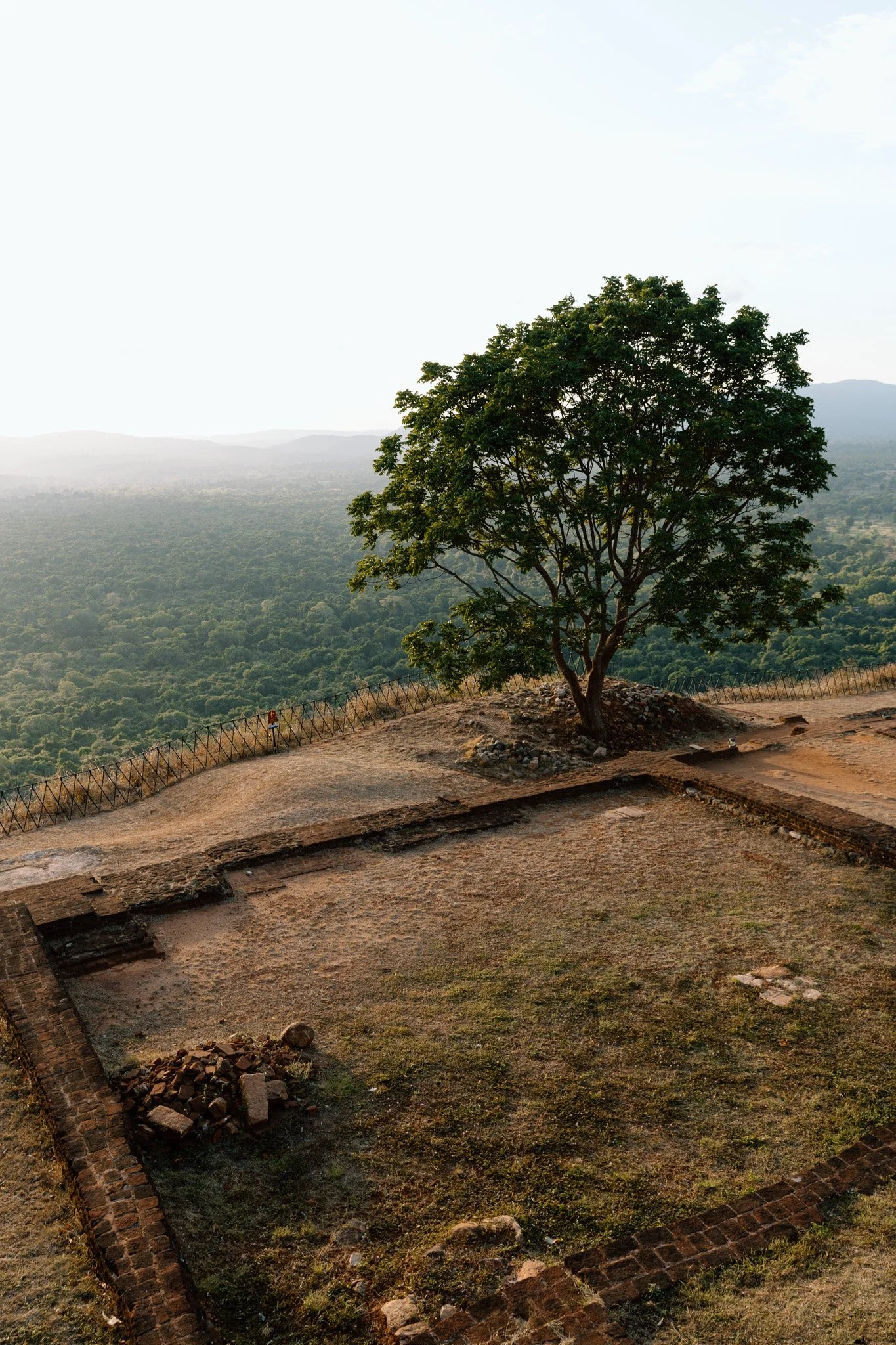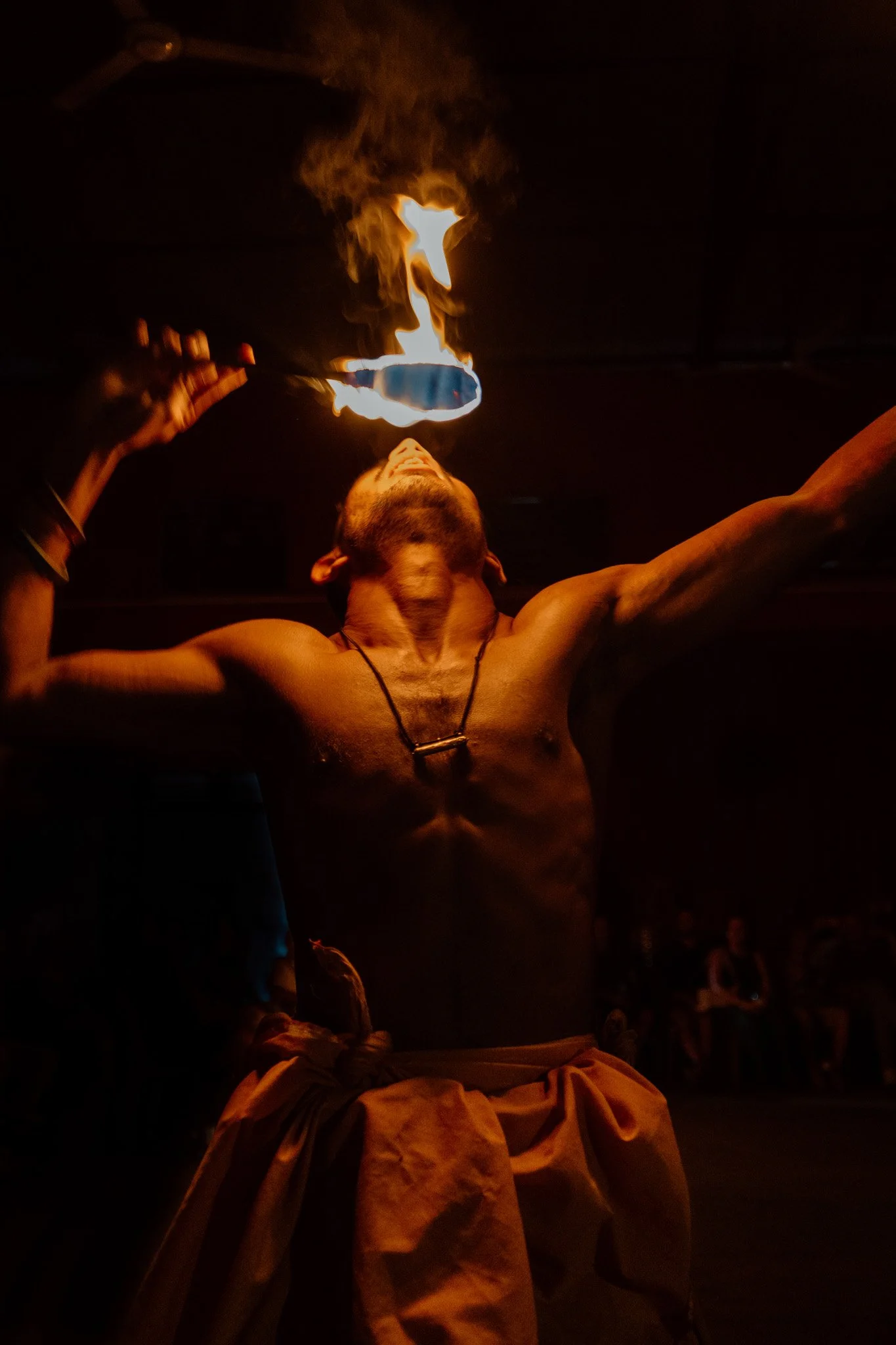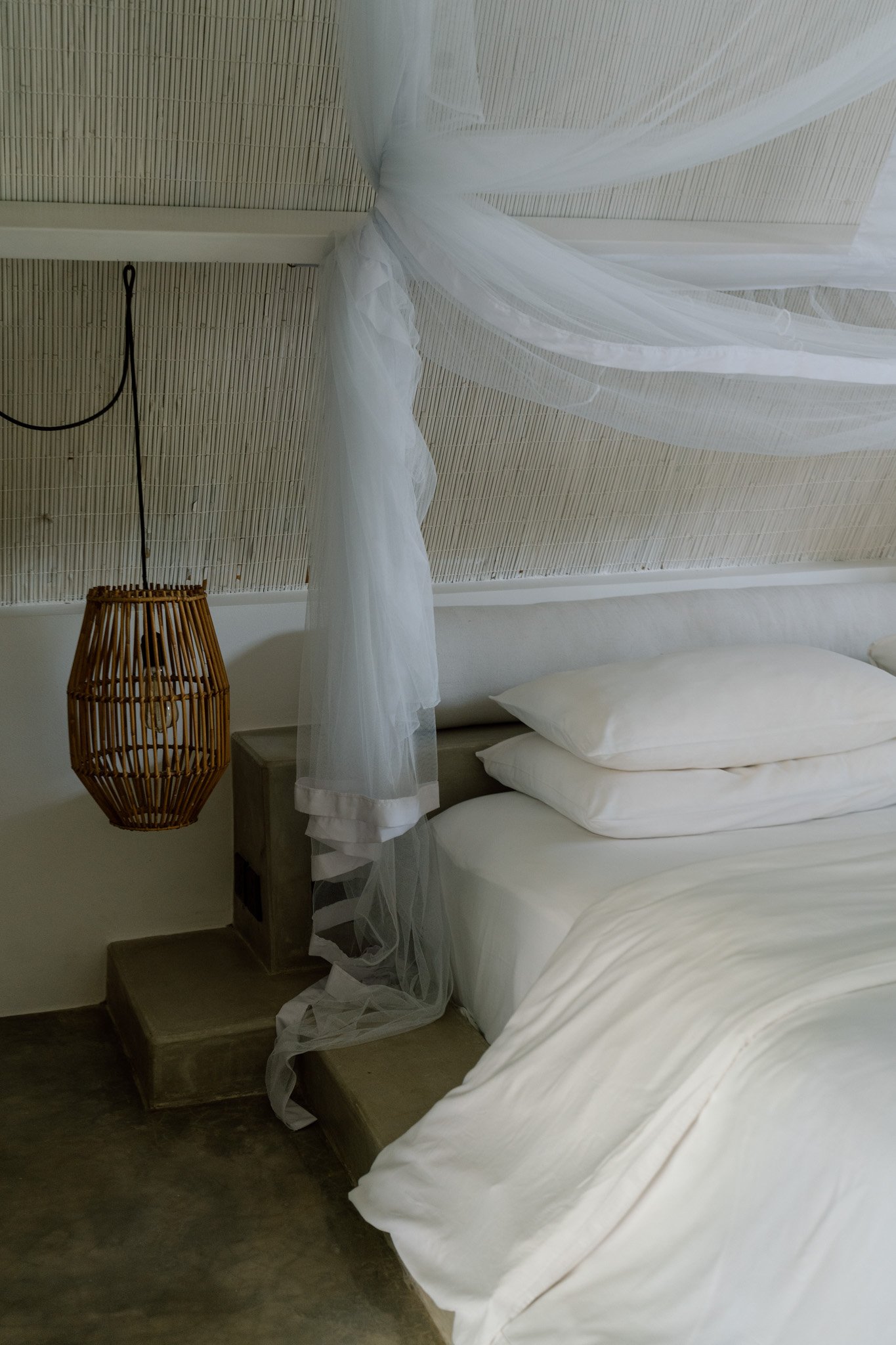Sigiriya Rock or Pidurangala Rock: The Ultimate 2025 Guide to Sri Lanka’s Famous Viewpoints
Wondering whether to visit Sigiriya or Pidurangala while in Sri Lanka? In this post, I detail share everything you need to know about both famous viewpoint hikes.
England has Big Ben. France has the Eiffel Tower. Sri Lanka has Sigiriya Rock.
Steeped in lore, the iconic Sigiriya Rock looms nearly 700 feet above the dense Sri Lankan jungle below. As a UNESCO World Heritage Site, it is an unmissable addition to any Sri Lanka travel itinerary.
However, a mere ten minutes away is another rock. Void of the same royal history, but with an arguably better view, Pidurangala Rock is also a must-do. But what if you only have time to hike one of the famous viewpoints?
Having hiked both twice during my travels across Sri Lanka, I’ve finally compiled everything I know about Sigiriya and Pidurangala into this guide. I’ve detailed where to stay, what to expect, costs, and how to hike both in the same morning (if you wish). Consider this your definitive guide to all things Sigiriya Rock and Pidurangala Rock!
Sigiriya Rock ↴
Sigiriya Rock History
Sigiriya Rock, sometimes referred to as Lion Rock due to its lion paw entrance, is one of the most popular and most visited landmarks in Sri Lanka. The ancient fortress flourished between 477 and 495 A.C., serving as King Kassapa’s palace.
King Kassapa kept his haram at the top, where they bathed and lounged for his pleasure. The king decorated the fortress with beautiful paintings that can still be seen (though not photographed) as you pass by the Mirror Wall.
SIGIRIYA ROCK ENTRANCE FEE + OPENING HOURS
As of 2025, entry to Sigiriya is USD $36. Both cash and card are accepted as of 2024. You can purchase your ticket from the ticket office located next to the fortress entrance, which is open from 5:30 AM until 5 PM. It’s easy to walk right past the ticket office, but as you walk up to the official entrance, your ticket will be scanned and stamped. Without one, you will be sent back.
is the Sigiriya entrance fee worth it?
Admittedly, USD $36 is quite steep, but the entry fee contributes to the Central Cultural Fund (CCF). CCF goes toward the conservation of culturally and historically significant monuments across Sri Lanka, meaning your ticket purchase directly helps with the upkeep and maintenance of Sigiriya. The ticket price also includes entrance to the Sigiriya Museum.
It’s also worth remembering that Sigiriya is a UNESCO World Heritage Site, often regarded as the Eighth Wonder of the World. In my opinion, Sigiriya’s preserved frescoes and ancient history make its ticket price worth it. I’ve been twice and have never regretted paying the money.
HOW LONG DOES IT TAKE TO CLIMB SIGIRIYA ROCK?
There are approximately 1200 steps to the top of Sigiriya, but it really isn’t much of a “hike". Getting to the top involves climbing up steep stairs and well-looked-after walkways. What makes ascending difficult is the heat, exacerbated by the crowds.
So, the answer to how long it takes to climb depends on your level of physical fitness. It also depends on your overall interest— you may want to stop to take photos along the way, stroll through the gardens, or explore the ruins.
Overall, I’d recommend budgeting 2-3 hours at Sigiriya. This includes 1 hour of actual “hiking” (roundtrip) and allows you 1-2 additional hours to explore. I’d also note that once the sun comes out in full force, you likely won’t want to spend too long at the top where there is no shade.
what to see at Sigiriya Rock
Sigiriya Museum | As previously mentioned, the museum entrance is included in your ticket price. Many people skip over the museum, but it’s worth visiting, especially if you come to Sigiriya Rock without a guide who can give you historical and cultural context. Inside are 3D models and photographs from the excavations that help create a fuller picture of Sigiriya as a fortress.
Sigiriya Damsels (the frescoes) | The Sigiriya Damsel frescoes are my favorite part of Sigiriya, which might sound funny since you clamber up a spiral metal staircase and walk in a short line through an overhang. However, this particular patch of rock is decorated with 21 ample bosomed ladies, reportedly King Kassapa’s concubines. Please note: in an attempt to preserve the frescoes, photography is strictly forbidden.
The Royal Gardens | The former royal gardens exemplify the ingenuity and technology of their time, complete with a water fountain. While perhaps not like the gardens you’d find in England, the royal gardens of Sigiriya are considered some of the oldest manicured urban gardens in the world.
The Mirror Wall | Covered in ancient etched poetry, the mirror wall was once polished so that the King could see his reflection in the stone wall (supposedly). Today, it’s no longer shiny enough to check your hair in, but the scrawlings date back centuries, making it a significant time capsule.
Lion Paw Staircase | Two colossal lion paws guard the narrow staircase that now leads to the summit of Sigiriya. Centuries ago, the stairway led visitors through the mouth of the lion, which then led them to the summit. Unfortunately, the lion’s head (and thus its mouth) collapsed some time ago, making the two paws the remaining pieces.
Sigiriya FAQs
There is no strict dress code at Sigiriya, and most foreign visitors tend to wear activewear.
There is an ATM at Sigiriya if you’d rather pay with cash, but the ATM hasn’t been operational either time I’ve visited.
Public toilets are near the entrance, but there are none at the top.
Beware of the wasps! You will see signs posted around Sigiriya asking visitors to speak quietly, as loud noises upset the wasps that nest inside the rock walls.
Drones are not permitted from the top of Sigiriya, as it is a culturally and historically significant national landmark. Drones also create a lot of noise (see point above).
Unfortunately, Sigiriya isn’t super accessible for those with limited mobility. Reaching its summits requires climbing steep, narrow metal stairs. Dust paths wind their way around the ancient gardens at the bottom, making these more accessible than the summit, though they are not entirely step-free.
Pidurangala Rock ↴
Pidurangala Rock is home to Pidurangala Vihara, the Pidurangala “Rock Temple.” The entry to the trail is through a temple, which is why you need to keep covered up. While the hike has less history attached to it, it is gaining a lot of coverage thanks to backpackers promoting it as the alternative to spendy Sigiriya.
The hike sways heavily on the side of nature. With a reclining Buddha figure and a temple to visit, you’ll get a little dose of Sri Lankan culture on your way up to the top! The roundedness of Pidurangala made you feel like you were living on the edge which suits me!
Pidurangala ROCK ENTRANCE FEE + OPENING HOURS
As of 2025, hiking Pidurangala costs 5000 LKR per person. The ticket office is a small booth near the front of the temple grounds. It opens at 4 AM (you read that right) each morning. Most people hike Pidurangala for sunrise and its view of Sigiriya in the distance.
how hard is the hike up Pidurangala?
Uneven brick stairs and massive boulders make the path to Pidurangala, which makes it more of an actual hike than Sigiriya. The grounds are slightly unkempt and there is a level of fitness required. Overall, we got to the top in the dark in 17 minutes…and I wore Tevas sandals, so I’m not sure I would qualify it as difficult. Still, you do have to scramble over boulders, so there is a level of fitness required. I would budget for a minimum of hours to hike to the top, watch the sunrise, and take photos.
While there aren’t extensive grounds to explore, you need to allow yourself some time primarily just after sunrise. All the people who make their way to the top of the rock tend to race back down to the bottom down the same boulders they had to ascend, creating a human traffic jam.
How to get to Sigiriya + Piduranagala ↴
Logistically, it makes the most sense to travel onward to Sigiriya and Pidurangala from either Dambulla (30-minute drive) or Kandy (2.5-hour drive).
From Dambulla, you can head to Sigiriya by bus or private driver (tuk-tuk or car). From the Dambulla Main Bus Station, take the regular bus service to Sigiriya. This bus service runs every half hour from 7 AM until 6 PM. The journey takes roughly an hour, though it can take longer depending on traffic. The Sigiriya bus stop is a short walk from the Sigiriya Rock entrance. It’s a short 10-minute tuk-tuk ride from Sigiriya Rock to Pidurangala Rock. Many people staying in the area even opt to bike between the two!
If you opt for a private driver, your ride will be more comfortable, but you will need to (fairly) negotiate your price. Most hotels can help book a car to Sigiriya from Dambulla if you don’t feel comfortable sorting tuk-tuk transport. It’s a 20-30 minute drive from Dambulla. We found most tuk-tuks quoted LKR 1500, but we also didn’t haggle.
From Kandy, I recommend taking the bus to Dambulla and then proceeding from there using either the bus or a tuk-tuk. You can pay for a private driver from Kandy, but this can get very expensive. The bus system throughout Sri Lanka is easy to navigate and more budget-friendly.
Sigiriya or Pidurangala ↴
Both rocks offer completely different experiences. Both have different views, associated costs, and fitness requirements.
Sigiriya is for history lovers and Pidurangala is for nature fanatics. Non-negotiable budgeters should opt for Pidurangala and those with wallet wiggle-room can head for Sigiriya. People tend to say they prefer the actual hike at Pidurangala and I’d say I agree. I also think people tell others to climb Pidurangala based entirely on the expense. The experiences are entirely different.
reasons to climb Pidurangala
The view | Anyone who has climbed both will tell you that the view from Pidurangala is unbeatable. You can see Sigiriya in the distance, standing tall over the dense jungle below.
Less touristy | While Pidurangala is definitely popular amongst backpackers, there are still fewer crowds here. Sunrise at Pidurangala is getting more and more popular due to travel blogs (like this one) and social media,
Cost | The entrance fee for foreigners to climb Pidurangala Rock is roughly USD $3, meaning it costs 1/12th of what Sigiriya does.
reasons to climb Sigiriya
Historical significance | Sigiriya is a UNESCO World Heritage Site, covered by plenty of rock carvings, sculptures, gardens, and artwork as you make your way to the top.
Fitness Level | The climb up Sigiriya Rock only involves stairs, and while it’s still a bit of a trek, it doesn’t require the scrambling that Pidurangala does.
how to see both Sigiriya + Pidurangala ↴
My top recommendation for doing both would be to do sunrise at Pidurangala and then head immediately to Sigiriya. We were worried about crowds at Sigiriya, so we did this the other way around. However, had we known, we would have woken up even earlier for sunrise at Pidurangala and then bolted over to Sigiriya. The problem with sunrise at Sigiriya is that, well, you
where to stay near Sigiriya + Pidurangala ↴
Cinnamon Lodge Habarana | Where Luke and I stayed on our inaugural visit to Sigiriya. While the food here is overpriced, the amenities include a beautiful pool, spa, and restaurant (good for a drink). It’s also conveniently located near other off-site restaurants, which I recommend.
Kassapa Lions Rock | We stayed at Kassapa Lions Rock on our second visit to Sigiriya, and boy, was it a treat. This beautiful hotel property is ideally located with a view of Sigiriya Rock from its main lobby. Here you’ll find an on-site ayurvedic spa, restaurant, pool, and bar.
Back Beyond Jungle Hideaway - Pidurangala | Looking for a budget-friendly stay? The Back Beyond Jungle Hideaway has treehouse-style rooms starting from just USD $60 per night.
Treehouse Hostel Sigiriya | Treehouse is a funky little hostel that’s great for solo travelers looking to make friends. The hostel has dorm rooms inclusive of mosquito netting, and there is common space to socialize.
We love using Booking.com to book the best places to stay around the world.
where to go after Sigiriya ↴
Dambulla | Sometime around 100 BC, King Vattagamini Abhaya was forced into hiding, where he came across a deep rock overhang in Dambulla. He claimed refuge there for 14 years before resuming his throne. To show his gratitude, the king commissioned temples built in the granite caves. There are sarongs to borrow if you come without your knees or shoulders covered, and shoes must remain off. The temples’ resident monkeys are known for being extra mischievous, so keep your belongings close.
Minneriya National Park | Minneriya National Park is one of Sri Lanka’s 26 national parks, famed for its high-density elephant population. The best animal viewing is in the early morning or at dusk, so plan your safari around then.
Polonnaruwa | Roughly an hour east of Sigiriya sits the second most ancient city in Sri Lanka, Polonnaruwa. Today, its ruins are a treasure trove of history. Polonnaruwa became the second capital of Sri Lanka in 993 A.D. after the destruction of Anuradhapura.

































